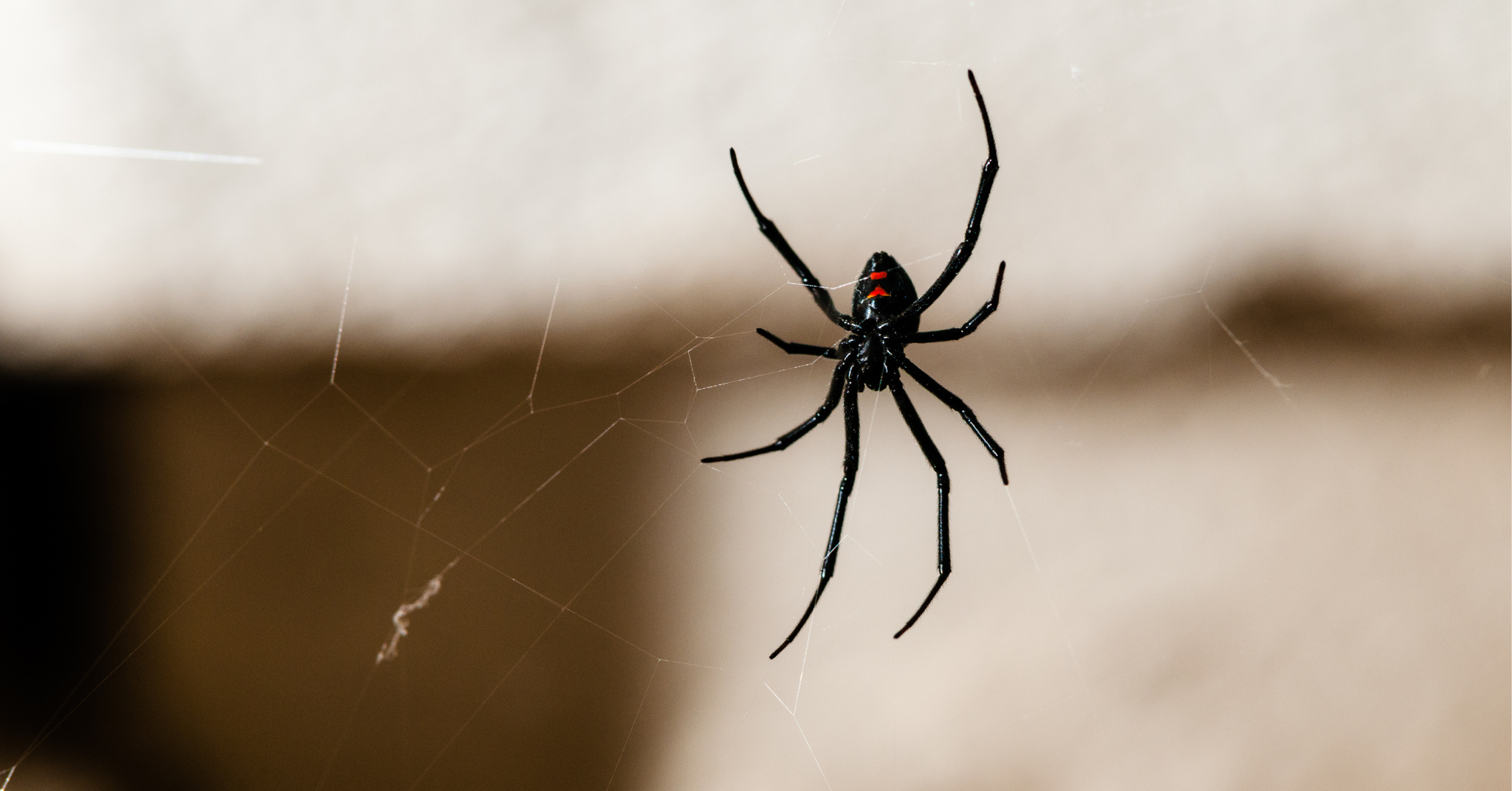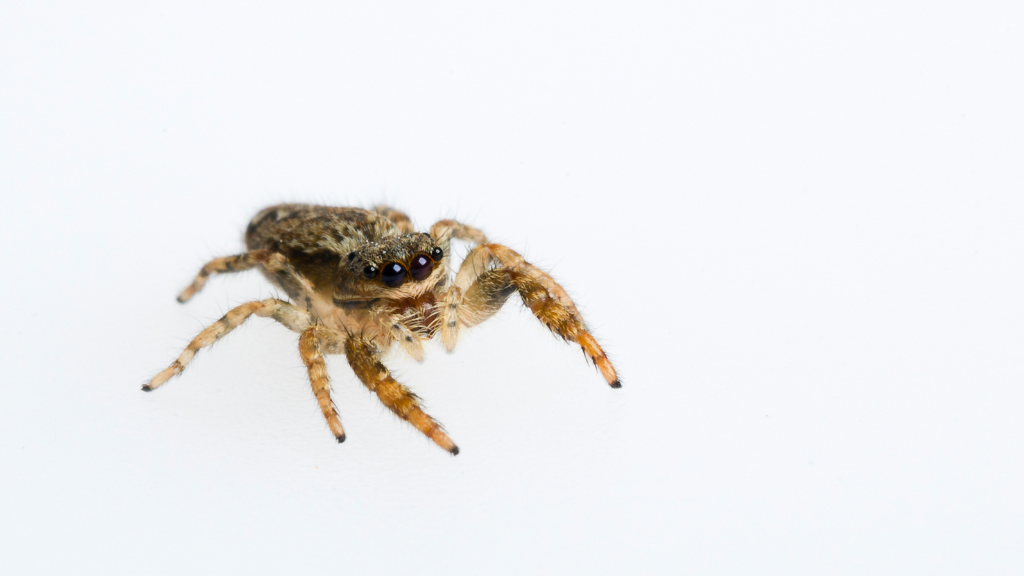What Does a Spider Bite Look Like?

If you’ve ever been bitten by a spider, you know how annoying (and sometimes dangerous) it can be. Spiders are defensive creatures, which means they bite when they feel threatened (as opposed to seeking humans out). Unlike ticks and fleas, spiders do not feed on blood but will bite to send a warning to protect themselves.
To figure out whether or not you’ve been bitten by a spider, there are a few common symptoms to look out for. Familiarize yourself with these signs, as well as the types of spiders that are most likely to bite.

WHAT ARE THE SIGNS OF A SPIDER BITE?
Spider bites resemble common bug bites, appearing as red, swollen bumps that may be itchy or painful. Most spider bites are harmless and don’t lead to further symptoms. It’s important to note that many skin irritations can look similar but might be caused by other factors, such as bacterial infections.
OTHER SPIDER BITE SYMPTOMS
Along with redness and itching, there are several other possible symptoms of a spider bite:
- Muscle contractions
- Sweating
- Shortness of breath
- Headache
- Blister
- Nausea
- Fatigue
If you experience any of these symptoms, consult with your doctor right away. You are likely experiencing an allergic reaction to spider venom or have possibly encountered one of the more dangerous spider species.
Some spider bites lead to infection, so it’s important to thoroughly clean and bandage any broken skin. You may end up needing antibiotics, steroids, or a combination of over-the-counter treatments.

WHICH SPIDERS BITE?
Not all spiders are able to bite humans because their fangs are either too small or too weak. However, there are a handful of spider species that do bite humans when threatened.

COMMON HOUSE SPIDERS
The spiders you most often see in your home are capable of biting you, but common house spider bites typically heal within a week. These bites look like small red spots.

HOBO SPIDERS
Hobo spiders are often mistaken for brown recluse spiders. Hobo spider bites can be painful and irritating, but they don’t typically lead to medical complications. These bites may leave broken skin and a red rash.

JUMPING SPIDERS
Jumping spider bites result in minor pain, similar to a bee sting. These bites can leave fang marks and redness and should clear up after a few days.

SAC SPIDERS
Yellow sac spiders account for some of the most common spider bites among humans. You might encounter a sac spider while gardening, and its bite is painful, leaving a burning sensation that can last for hours. These bites often cause bruising.

WOLF SPIDERS
These fast-moving spiders deliver a painful bite that often leaves behind fang marks. The red swelling should heal within a few days with proper treatment.

CAMEL SPIDERS
Camel spiders don’t produce venom, but they have large powerful pincer jaws that can leave a painful wound. Camel spider bites are usually larger than other spider bites. These spiders are most often found in desert landscapes.

BROWN RECLUSE SPIDERS
A brown recluse spider bite can be extremely dangerous. These spiders produce necrotic venom that can kill tissue and result in hospitalization if not treated. At first, a brown recluse bite will appear red and swollen but can change in appearance over the course of a day or two. Watch for blistering, open wounds, scabbing, and spread.

BLACK WIDOW SPIDERS
Probably the most famous venomous spider in the United States, black widow spiders leave painful bites with distinct symptoms including muscle aches and sweating. Although symptoms can be severe, black widow bites don’t look as menacing as some other spider bites. They typically leave a small red bump on the skin.

WHAT CAN BE MISTAKEN FOR A SPIDER BITE?
Although there are several species of spider that can bite humans, other insect bites or skin ailments can be easily mistaken for a spider bite.
FLEA AND BEDBUG BITES
Flea bites and bedbug bites show up as small red spots on the skin and are often mistaken for spider bites at first. These bites are itchy, extremely irritating, and are usually part of a much bigger problem. Fleas and bedbugs are parasites that actively seek out hosts to feed on, so you will notice their bites in much larger numbers than a solitary spider bite.
MOSQUITO BITES
Most people are familiar with mosquito bites, but they can still be mistaken for spider bites. Mosquito bites can be very itchy and bothersome but usually cause slight welting of the skin, unlike common spider bites.
SHINGLES
Shingles is a reactivation of the chickenpox herpes virus and forms a painful rash on the skin. When shingles first appear on the skin there may only be one or two irritating, itchy bumps that could be mistaken for spider bites. However, these bumps will multiply and follow a distinct nerve path, making them easier to distinguish from a spider bite.
METHICILLIN-RESISTANT Staphylococcus Aureus (MRSA)
MRSA, also known as a staph infection, is a skin condition resulting from antibiotic-resistant bacteria. MRSA can show up as a small, red, irritated patch of skin and cause flu-like symptoms which is why people might confuse the reaction to a venomous spider bite. MRSA requires medical diagnosis and treatment and often spreads more aggressively than a spider bite.

WHAT SHOULD YOU DO IF A SPIDER BITES YOU?
-
CLEAN THE BITE: Wash with warm water and soap.
-
APPLY COLD: Use a cold washcloth or ice pack.
-
ELEVATE: Raise the affected area
-
TAKE ANTIHISTAMINE: Helps with itching and swelling.
-
USE PAIN RELIEVERS: Take OTC medication for pain.
CONLUSION:
If you’ve been bitten by a spider in or around your home, professional pest control experts can help you get rid of these pests. At Joshua’s Pest Control, we get rid of bothersome spiders and keep them away. Along with targeting problem areas like attics, crawl spaces, and basements, we also treat the exterior perimeter of your home to prevent spiders from crawling back inside.
With regular seasonal visits, you can rest easy knowing your home is protected from painful spider bites. Contact us today for all of your pest control needs.
SOURCES
- https://my.clevelandclinic.org/health/diseases/16639-spider-bites
- https://extension.psu.edu/bold-jumper-spider
- https://www.canr.msu.edu/resources/yellow-sac-spiders
- https://www.livescience.com/41467-wolf-spider.html
- https://www.mayoclinic.org/diseases-conditions/spider-bites/diagnosis-treatment/
- https://www.cdc.gov/mrsa/community/index.html
Author Bio
Courtney Enzor has worked in the pest control industry for about a decade. From helping you build a fly trap to giving you the best tips for identifying various bugs, she loves answering all your pest-related questions and sharing her pest-related expertise through writing. At the end of the day, she hopes her content will help people avoid mishaps and keep families happy and healthy!

